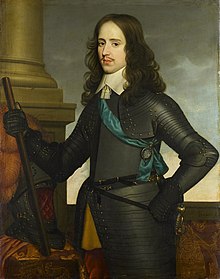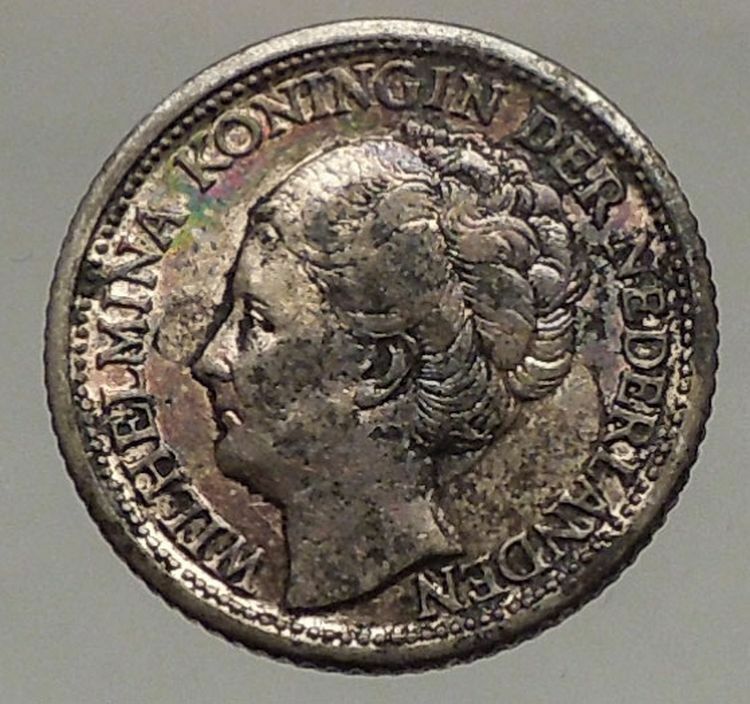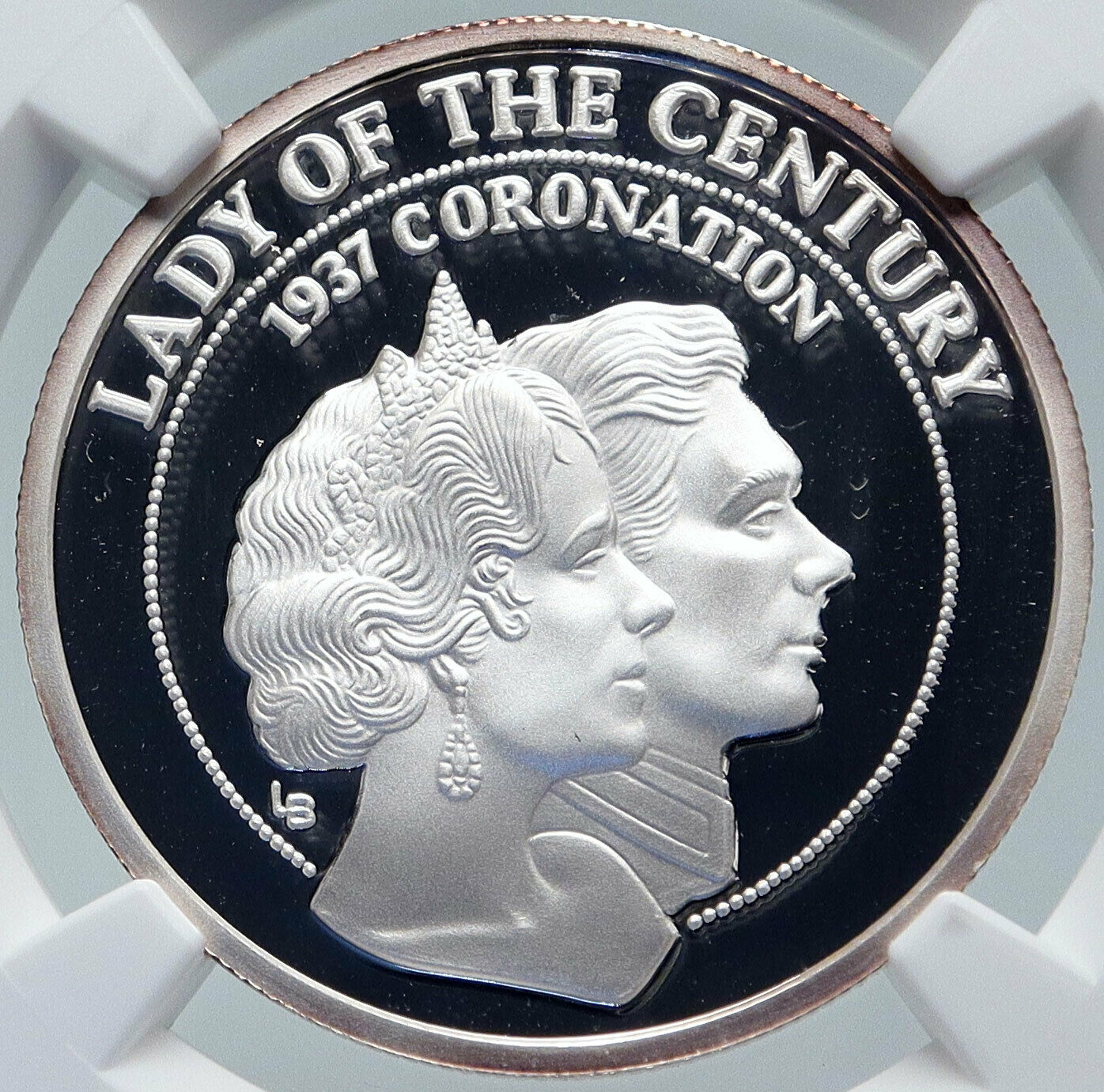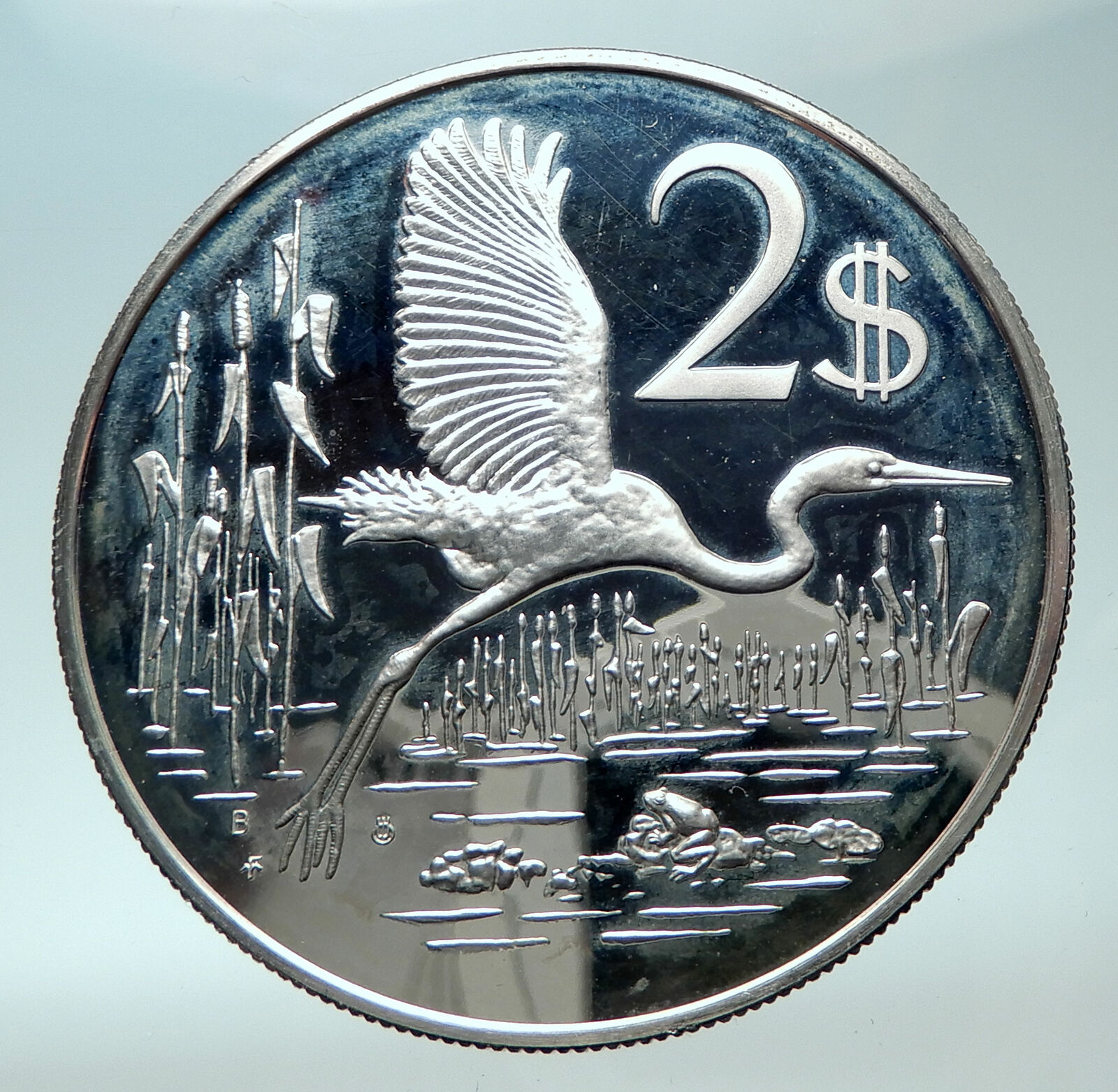|
Turks & Caicos Islands
House of Stuart – William and Mary
2001 Proof Silver 20 Crowns 39mm (31.16 grams) 0.999 Silver (1.0008 oz. ASW)
Reference: Cf KM# 245 | Engraver: Ian Rank-Broadley
· ELIZABETH II·TURKS AND CAICOS ISLANDS · 2001 IRB 20 CROWNS, Bust of Elizabeth II to right.
HOUSE OF STUART 1689 WILLIAM AND MARY 1702, William and Mary facing.
You are bidding on the exact item pictured, provided with a Certificate of Authenticity and Lifetime Guarantee of Authenticity.
 William II (27 May 1626 – 6 November 1650) was sovereign Prince of Orange and Stadtholder of Holland, Zeeland, Utrecht, Guelders, Overijssel and Groningen in the United Provinces of the Netherlands from 14 March 1647 until his death three years later. His only child, William III, reigned as King of England, Ireland, and Scotland. William II (27 May 1626 – 6 November 1650) was sovereign Prince of Orange and Stadtholder of Holland, Zeeland, Utrecht, Guelders, Overijssel and Groningen in the United Provinces of the Netherlands from 14 March 1647 until his death three years later. His only child, William III, reigned as King of England, Ireland, and Scotland.
William II, Prince of Orange, was the son of Frederick Henry, Prince of Orange, and Amalia of Solms-Braunfels. Frederick Henry was the youngest son of William the Silent (stadtholder 1559–1584); his older half brother Maurits of Nassau was stadtholder (1585–1625); he was stadtholder from 1625 to 1647. The stadtholders governed in conjunction with the States-General, an assembly of representatives from each of the seven provinces, but usually dominated by the largest and wealthiest province, Holland.
 On 2 May 1641, William married Mary, Princess Royal, who was the eldest daughter of King Charles I of England, in the Chapel Royal of Whitehall Palace in London. William was not yet fifteen, while Mary was just nine at that time. On 2 May 1641, William married Mary, Princess Royal, who was the eldest daughter of King Charles I of England, in the Chapel Royal of Whitehall Palace in London. William was not yet fifteen, while Mary was just nine at that time.
In 1647, his father Frederick Henry died, and William II succeeded to both his hereditary titles and his elective offices as stadtholder of five of the seven provinces: Holland, Zeeland, Utrecht, Guelders and Overijssel.
The Netherlands at this time was engaged in the Eighty Years’ War against Spain for its independence. Under Frederick Henry, the Netherlands had largely won the war, and since 1646 had been negotiating with Spain on the terms for ending it.
The negotiators agreed to the Peace of Münster in 1648, but William opposed acceptance of the treaty, even though it recognized the independence of the (northern) Netherlands, because it left the southern Netherlands in the hands of the Spanish monarchy. A separate peace furthermore violated the alliance with France formed in 1635. However, the States of six provinces voted to accept it.
Secretly, William opened his own negotiations with France with the goal of extending his own territory under a more centralized government. In addition, he worked for the restoration of his exiled brother-in-law, Charles II, to the throne of England.
In 1650 William II became involved in a bitter quarrel with the province of Holland and the powerful Regents of Amsterdam, Andries Bicker and his cousin Cornelis de Graeff. With the Peace of Münster, the Regents wanted to reduce the army, saving money. That would also diminish William’s authority. William imprisoned eight members of the States of Holland (including Jacob de Witt) in the castle of Loevestein. In addition, he sent his cousin, Willem Frederik of Nassau-Dietz with an army of 10,000 men to seize Amsterdam by force. Bad weather foiled this campaign, but Amsterdam did give in.
William served as stadtholder for only three years, until he died of smallpox in 1650. His only son William was born one week after his death. This was the beginning of the First Stadtholderless Period. His son succeeded him in 1672 as stadtholder and later, in 1689, also became King of England.
 The Turks and Caicos Islands, or TCI for short, are a British Overseas Territory consisting of the larger Caicos Islands and smaller Turks Islands, two groups of tropical islands in the Lucayan Archipelago of the Atlantic Ocean and northern West Indies. They are known primarily for tourism and as an offshore financial centre. The resident population is 31,458 as of 2012 of whom 23,769 live on Providenciales in the Caicos Islands. The Turks and Caicos Islands, or TCI for short, are a British Overseas Territory consisting of the larger Caicos Islands and smaller Turks Islands, two groups of tropical islands in the Lucayan Archipelago of the Atlantic Ocean and northern West Indies. They are known primarily for tourism and as an offshore financial centre. The resident population is 31,458 as of 2012 of whom 23,769 live on Providenciales in the Caicos Islands.
 The Turks and Caicos Islands lie southeast of Mayaguana in the Bahamas island chain and north of the island of Hispaniola (Haiti and the Dominican Republic) and the other Antilles archipelago islands. Cockburn Town, the capital since 1766, is situated on Grand Turk Island about 1,042 kilometres (647 mi) east-southeast of Miami, United States. The islands have a total land area of 430 square kilometres (170 sq mi). The Turks and Caicos Islands lie southeast of Mayaguana in the Bahamas island chain and north of the island of Hispaniola (Haiti and the Dominican Republic) and the other Antilles archipelago islands. Cockburn Town, the capital since 1766, is situated on Grand Turk Island about 1,042 kilometres (647 mi) east-southeast of Miami, United States. The islands have a total land area of 430 square kilometres (170 sq mi).
.svg/250px-Turks_and_Caicos_Islands_in_United_Kingdom_(special_marker).svg.png) The first recorded European sighting of the islands now known as the Turks and Caicos occurred in 1512. In the subsequent centuries, the islands were claimed by several European powers with the British Empire eventually gaining control. For many years the islands were governed indirectly through Bermuda, the Bahamas, and Jamaica. When the Bahamas gained independence in 1973, the islands received their own governor, and have remained a separate autonomous British Overseas Territory since. The first recorded European sighting of the islands now known as the Turks and Caicos occurred in 1512. In the subsequent centuries, the islands were claimed by several European powers with the British Empire eventually gaining control. For many years the islands were governed indirectly through Bermuda, the Bahamas, and Jamaica. When the Bahamas gained independence in 1973, the islands received their own governor, and have remained a separate autonomous British Overseas Territory since.
|





 William II (27 May 1626 – 6 November 1650) was sovereign Prince of Orange and Stadtholder of Holland, Zeeland, Utrecht, Guelders, Overijssel and Groningen in the United Provinces of the Netherlands from 14 March 1647 until his death three years later. His only child, William III, reigned as King of England, Ireland, and Scotland.
William II (27 May 1626 – 6 November 1650) was sovereign Prince of Orange and Stadtholder of Holland, Zeeland, Utrecht, Guelders, Overijssel and Groningen in the United Provinces of the Netherlands from 14 March 1647 until his death three years later. His only child, William III, reigned as King of England, Ireland, and Scotland. On 2 May 1641, William married Mary, Princess Royal, who was the eldest daughter of King Charles I of England, in the Chapel Royal of Whitehall Palace in London. William was not yet fifteen, while Mary was just nine at that time.
On 2 May 1641, William married Mary, Princess Royal, who was the eldest daughter of King Charles I of England, in the Chapel Royal of Whitehall Palace in London. William was not yet fifteen, while Mary was just nine at that time. The Turks and Caicos Islands, or TCI for short, are a British Overseas Territory consisting of the larger Caicos Islands and smaller Turks Islands, two groups of tropical islands in the Lucayan Archipelago of the Atlantic Ocean and northern West Indies. They are known primarily for tourism and as an offshore financial centre. The resident population is 31,458 as of 2012 of whom 23,769 live on Providenciales in the Caicos Islands.
The Turks and Caicos Islands, or TCI for short, are a British Overseas Territory consisting of the larger Caicos Islands and smaller Turks Islands, two groups of tropical islands in the Lucayan Archipelago of the Atlantic Ocean and northern West Indies. They are known primarily for tourism and as an offshore financial centre. The resident population is 31,458 as of 2012 of whom 23,769 live on Providenciales in the Caicos Islands.  The Turks and Caicos Islands lie southeast of Mayaguana in the Bahamas island chain and north of the island of Hispaniola (Haiti and the Dominican Republic) and the other Antilles archipelago islands. Cockburn Town, the capital since 1766, is situated on Grand Turk Island about 1,042 kilometres (647 mi) east-southeast of Miami, United States. The islands have a total land area of 430 square kilometres (170 sq mi).
The Turks and Caicos Islands lie southeast of Mayaguana in the Bahamas island chain and north of the island of Hispaniola (Haiti and the Dominican Republic) and the other Antilles archipelago islands. Cockburn Town, the capital since 1766, is situated on Grand Turk Island about 1,042 kilometres (647 mi) east-southeast of Miami, United States. The islands have a total land area of 430 square kilometres (170 sq mi). .svg/250px-Turks_and_Caicos_Islands_in_United_Kingdom_(special_marker).svg.png) The first recorded European sighting of the islands now known as the Turks and Caicos occurred in 1512. In the subsequent centuries, the islands were claimed by several European powers with the British Empire eventually gaining control. For many years the islands were governed indirectly through Bermuda, the Bahamas, and Jamaica. When the Bahamas gained independence in 1973, the islands received their own governor, and have remained a separate autonomous British Overseas Territory since.
The first recorded European sighting of the islands now known as the Turks and Caicos occurred in 1512. In the subsequent centuries, the islands were claimed by several European powers with the British Empire eventually gaining control. For many years the islands were governed indirectly through Bermuda, the Bahamas, and Jamaica. When the Bahamas gained independence in 1973, the islands received their own governor, and have remained a separate autonomous British Overseas Territory since. 




